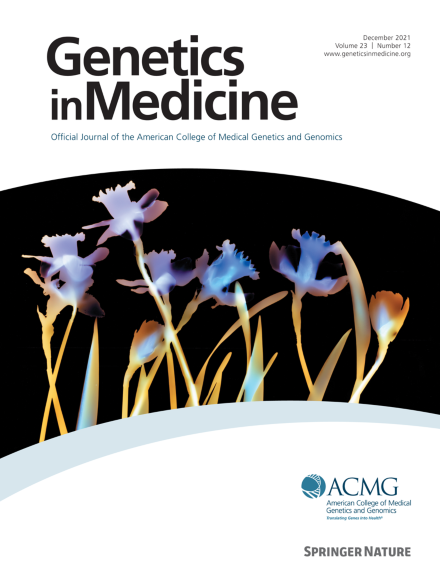Optimizing gene panels for equitable reproductive carrier screening: The Goldilocks approach
IF 6.6
1区 医学
Q1 GENETICS & HEREDITY
引用次数: 0
Abstract
Purpose
Professional organizations recommend pan-ancestry carrier screening for autosomal recessive and X-linked conditions. Advances in DNA sequencing have allowed the analysis of hundreds of genes; however, the optimal number of genes for carrier screening remains unclear. The American College of Medical Genetics and Genomics (ACMG) has proposed a tiered approach recommending screening for 113 genes.
Methods
We analyzed ClinVar and gnomAD v4.1.0, for genes associated with serious autosomal recessive and X-linked conditions and modeled screening performance across panels of varying compositions and sizes in diverse genetic ancestries. We also reevaluated the ACMG gene list using the updated gnomAD data.
Results
We identified potential inconsistencies in the ACMG gene lists, particularly in the carrier test performance (defined as a positive yield) for underrepresented genetic ancestry groups. Modeling of the population data for 1310 genes revealed that the screening of 152, 248, 531, and 725 genes achieved 90%, 95%, 99%, and 99.7% positive yields, respectively, in couples. Real-world data from the screening of more than 60,000 couples were used to validate the model.
Conclusion
Our methodology optimizes the gene content of carrier screening panels for diverse ancestry groups, provides a mechanism for continually updating guidelines, ensures consistency with genomic population data, and improves equity across populations.

优化基因面板公平生殖载体筛选:“金发姑娘”方法。
背景:专业组织推荐对常染色体隐性遗传(AR)和x连锁(XL)疾病进行泛祖先携带者筛查。DNA测序技术的进步允许对数百个基因进行分析,但用于载体筛选的最佳基因数量仍不清楚。美国医学遗传学和基因组学学院(ACMG)提出了一种分层方法,建议对113个基因进行筛查。方法:我们分析了ClinVar和gnomAD v4.1.0中与严重AR和XL疾病相关的基因,并模拟了不同遗传祖先中不同组成和大小的筛选结果。我们还使用更新后的gnomAD数据重新评估了ACMG基因列表。结果:我们确定了ACMG基因列表中潜在的不一致性,特别是在代表性不足的遗传祖先群体的携带者测试性能(我们将其定义为正产量)。对1310个基因的群体数据进行建模,结果表明,对152、248、531和725个基因的筛选阳性率分别为90%、95%、99%和99.7%。来自6万多对夫妇的真实世界数据验证了我们的模型。结论:我们的方法优化了不同祖先群体载体筛选面板的基因含量,提供了一种持续更新指南的机制,确保了基因组群体数据的一致性,并提高了群体间的公平性。
本文章由计算机程序翻译,如有差异,请以英文原文为准。
求助全文
约1分钟内获得全文
求助全文
来源期刊

Genetics in Medicine
医学-遗传学
CiteScore
15.20
自引率
6.80%
发文量
857
审稿时长
1.3 weeks
期刊介绍:
Genetics in Medicine (GIM) is the official journal of the American College of Medical Genetics and Genomics. The journal''s mission is to enhance the knowledge, understanding, and practice of medical genetics and genomics through publications in clinical and laboratory genetics and genomics, including ethical, legal, and social issues as well as public health.
GIM encourages research that combats racism, includes diverse populations and is written by authors from diverse and underrepresented backgrounds.
 求助内容:
求助内容: 应助结果提醒方式:
应助结果提醒方式:


